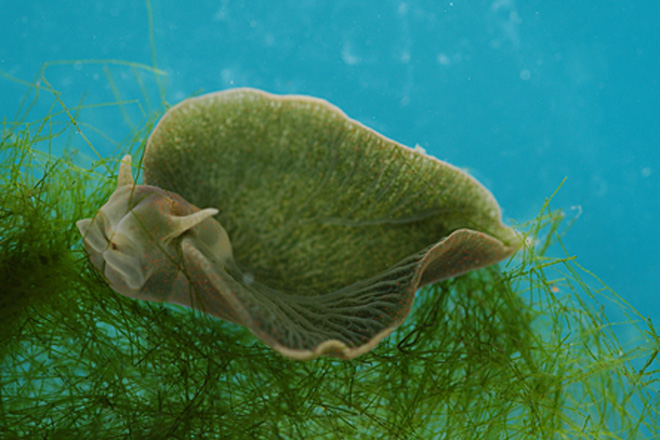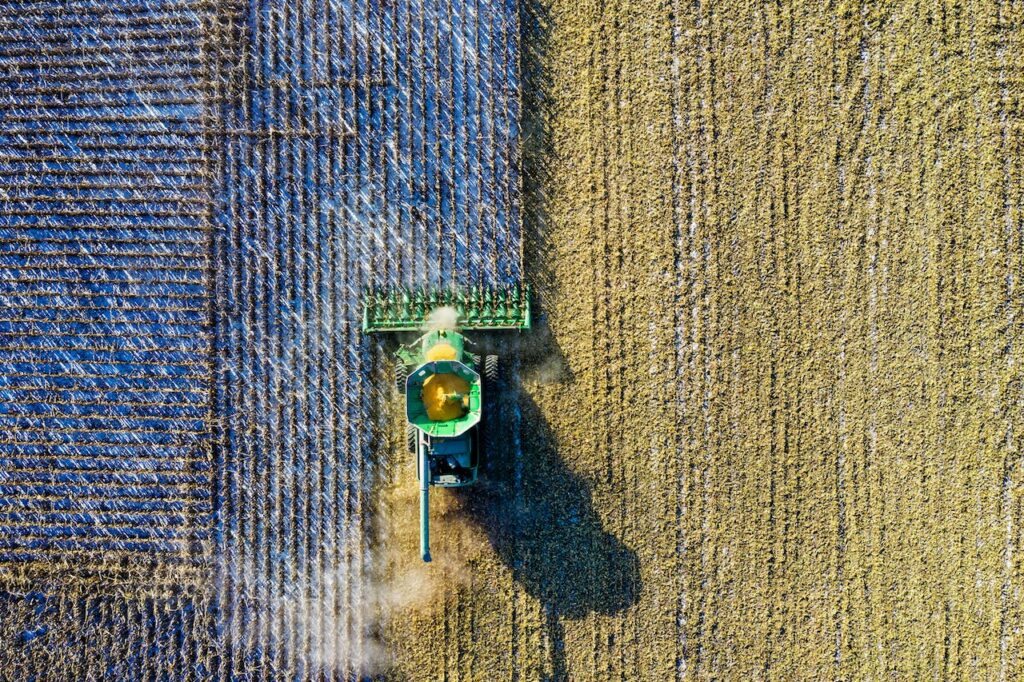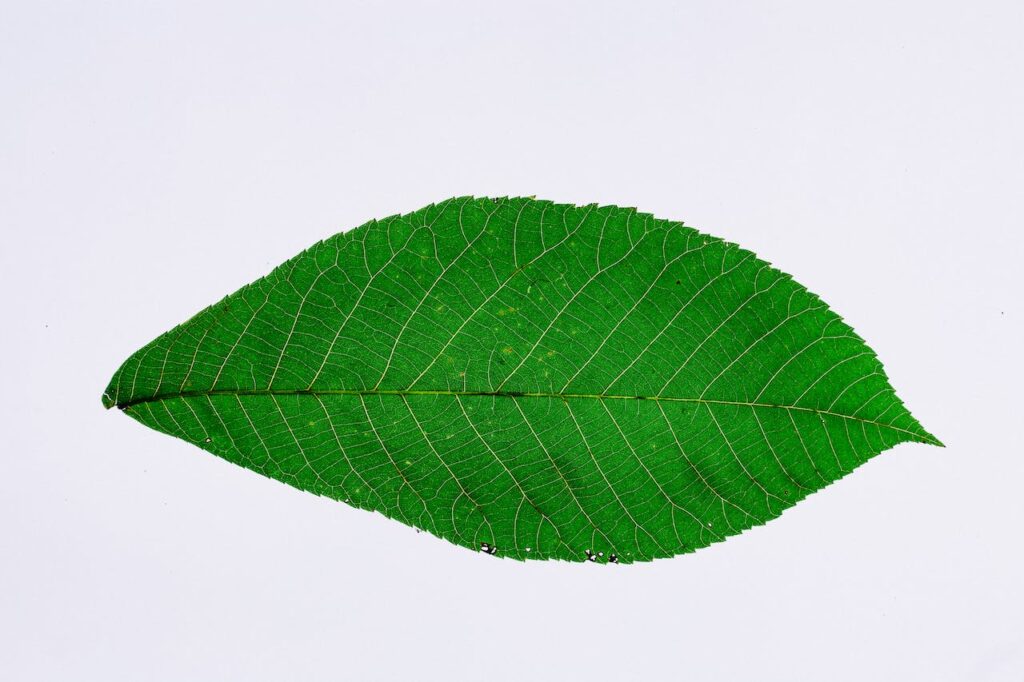
Photosynthesis is the fundamental biological process intrinsic to plant life. Standardly it is defined as the conversion of light energy into chemical energy and serves as the primary mechanism by which plants synthesize organic compounds from inorganic substrates.
At its core, photosynthesis embodies the remarkable ability of green organisms to harness the radiant energy of the sun, transforming it into the essential fuel that sustains life.
The foundational equation encapsulating this transformative process is relatively simple:
6CO2 + 6H2O + Light Energy → C6H12O6 + 6O2
In this chemical process, carbon dioxide (CO₂) and water (H₂O) undergo a series of biochemical transformations catalyzed by enzymes, spurred by the radiant energy of sunlight. The outcome is the production of glucose (C₆H₁₂O₆) and the liberation of oxygen (O₂) as a byproduct, released into the atmosphere as a testament to nature’s collaboration with the sun.
Now, having all that in mind, let’s try to envision a reality where humans possess this extraordinary ability to photosynthesize. Picture a society bathed in a perpetual green glow, where individuals absorb sunlight to generate sustenance and energy.
This radical concept challenges the very essence of what it means to be human, prompting us to dive deeply into this thought experiment asking ourselves; “What Would Happen If Humans Could Photosyntesize”.
However, before embarking on this thought experiment journey, let’s see if any animals already have this ability.
Animals and Photosynthesis
As we dive into the details of photosynthesis and its potential impact on human existence, it’s interesting to consider whether nature has already crafted examples of organisms, beyond plants, that harness sunlight for sustenance.
While animals, by and large, do not engage in photosynthesis, a fascinating exception actually exists.
Meet Elysia Chloratica.
The Elysia Chlorotica

Elysia chlorotica is a sea slug found along the Atlantic coast of North America. This remarkable creature has earned the nickname “solar-powered sea slug” due to its unique ability to incorporate functional chloroplasts into its own cells.
The sea slug’s affinity for a specific type of algae, Vaucheria litorea, is pivotal in this unusual relationship. After consuming the algae, the sea slug incorporates its chloroplasts into its own cells, where they continue to function and carry out photosynthesis.
This symbiotic integration allows the sea slug to harness the energy produced by the chloroplasts, supplementing its diet with the sugars generated through photosynthesis.
While this example provides a glimpse into the potential integration of photosynthetic capabilities in certain animals, the concept of animals developing full-fledged photosynthesis, akin to plants, remains firmly rooted in the realm of speculative fiction and thought experiments.
Nonetheless, here at CuriousMatrix.com, we simply love thought experiments, so let’s unwrap this one.
Let’s see what could potentially happen if humans could photosynthesize.
Imagining Human Photosynthesis

Imagine a scenario where humans, equipped with engineered biological mechanisms, would tap into the energy of the sun to synthesize nutrients directly from sunlight, carbon dioxide, and water.
First, let’s see how could that even happen on a hypothetical level.
Developing a Hypothetical Photosynthetic Skin with Genetic Engineering

CRISPR, a powerful tool, could potentially be the key to introducing changes to our genes, allowing us to harness the sun’s energy in a new way.
At the heart of this idea is the concept of adding special pigments, like those found in plants, to our skin cells.
These pigments would then act like tiny solar panels, capturing sunlight and setting off a chain reaction within our cells.
To make this vision a reality, we’d need to tweak our genetic code to optimize our skin cells for this sunlight-powered process. Think of it as giving our cells a special blueprint that guides them in efficiently using sunlight to create energy.
Mimicking structures found in plants, like the thylakoid membranes in chloroplasts, could further enhance our cells’ ability to convert sunlight into energy.
As our genetically modified skin lays in the sunlight, it would embark on additional journey—harvesting light energy and turning it into a special kind of fuel called ATP.
This energy could then power various activities within our bodies.
However, we need to consider the practical side of this “experiment”
Namely, if we’re envisioning a world where our skin becomes a source of energy, we need to figure out how much skin would be needed to meet our energy requirements.
Calculations here get a bit speculative, but the idea is to find the right balance between the energy our bodies need and the surface area of our skin that can capture sunlight.
Factors like how much sunlight we’re exposed to, how well our skin absorbs light, and how efficiently our cells convert it into energy all come into play.
While we might not have precise numbers it should be understood that we use much more energy than plants.
Therefore, even in hypothetical scenarios where our whole skin could produce energy via photosynthesis – this energy would not be sufficient for normal human day to day tasks.
Nonetheless, let’s continue with this thought experiment.
How Would Our Body Change?

As already mentioned, in this speculative scenario, the genetic alterations would pave the way for the integration of synthetic chlorophyll analogs, potentially reshaping our cellular structures to efficiently capture and utilize sunlight.
The human body, once reliant on external sustenance, would need to evolve into a solar-powered entity.
As these potential genetic alterations become integral to our cellular makeup, questions would arise about the long-term effects of these changes.
Would the human body undergo structural changes to optimize sunlight absorption? Could these alterations influence our susceptibility to certain diseases or impact our overall resilience?
The physiological transformation would intertwine with a broader narrative of evolutionary adaptation.
Having said that, we also need to consider overall changes to the world in which humans could photosynthesize.
Food Economy and Production of Food

The ripple effects of human photosynthesis would extend beyond individual physiology changing the way our food systems and economies function.
Traditional agricultural landscape would probably undergo significant changes as the need for large-scale food production drop.
Massive expanses of land, once dedicated to traditional farming, could be repurposed for ecological restoration, reforestation, and the preservation of natural habitats.
Love Life & Photosynthesis

As human societies adapt to the solar-powered paradigm, interpersonal dynamics, including romantic relationships, could perhaps experience some kind of renaissance.
Shared sun-soaking experiences would become intimate moments.
The traditional romantic dinner would give way to shared moments relaxing in the sun, intertwining the emotional and metabolic dimensions of human relationships.
This transformation would extend beyond aesthetics, potentially influencing the chemistry of attraction.
The scent of sunscreen, once associated with beaches and vacations, might become a unique olfactory signature of human interaction.
The very nature of courtship and romantic gestures could evolve, an interesting landscape for the expression of love in the era of photosynthetic humanity.
Consequences for Atmosphere and Earth

The repurposing of agricultural land for ecological restoration and reforestation would help our planet in many ways.
Carbon sequestration would probably gain momentum.
And the reduction in carbon emissions associated with conventional food production would become a catalyst for environmental regeneration.
However, the potential for increased sunlight absorption by a photosynthetic human population would raise questions about localized environmental impacts.
Humans would probably relocate to places with huge amount of sunshine throughout the year. Needless to say, many “cloudy” places and countries would become empty.
Energy Levels and Productivity

The symbiosis between humans and sunlight would transform the traditional notion of energy levels and productivity.
The constant availability of sunlight as an energy source would eliminate the peaks and downs associated with traditional meal-based energy intake.
Individuals may experience sustained vitality throughout the day, breaking free from the constraints of circadian rhythms tied to conventional eating patterns.
Workplaces and educational institutions would also need to adapt to this paradigm shift, enabling environments optimized for sunlight exposure.
Conclusion

In summary, if people could photosynthesize whole world would completely change. This change would impact various aspects of life, including daily routines, work life, love life, longevity, global economics, and the overall state of the Earth.
However, we need to ask ourselves – could human photosynthesis ever become a reality?
And the answer is – most certainly not.
At least not in the near future.
Perhaps in 1000 years, we will have some kind of mechanism to use sun energy to enhance some parts of our bodies. Perhaps we’ll develop micro solar panels and connect them to our bodies.
These panels would then potentially enable the charging of all devices connected to our bodies.
And in the end – who knows what the future brings.
Perhaps we will be connected to computers in some kind of simulation and perhaps we’ll use solar panels as a baseline for photosynthesis.
And perhaps – we will destroy ourselves completely before any of these hypotheses become reality.
Note: If you’re interested in similar articles, on topic of “What if”, you can check:



























